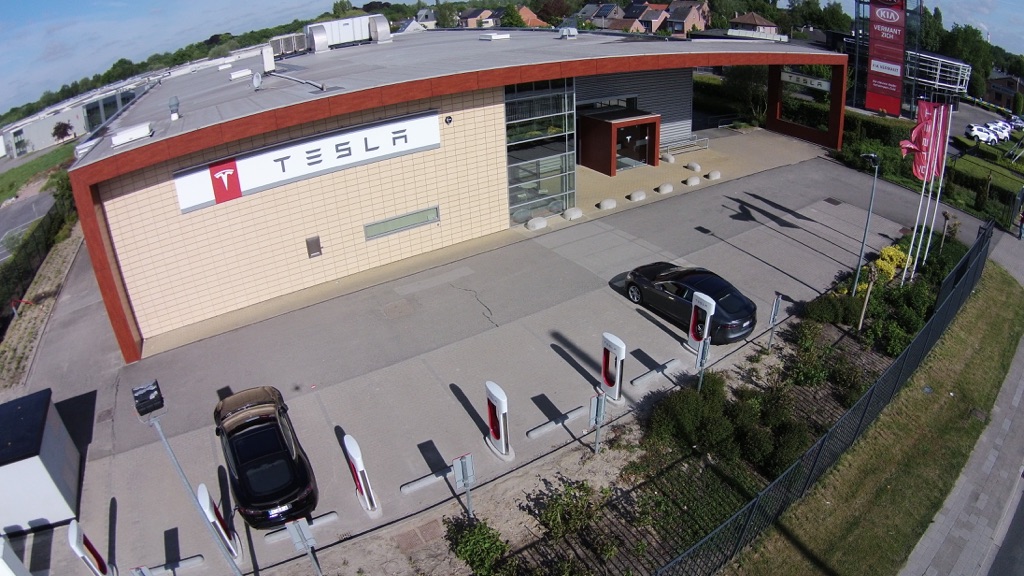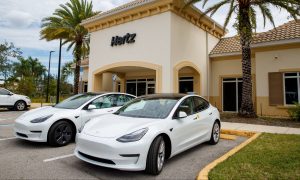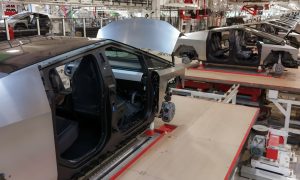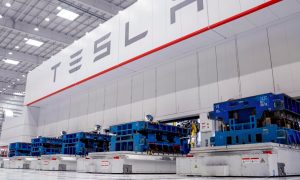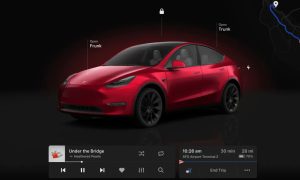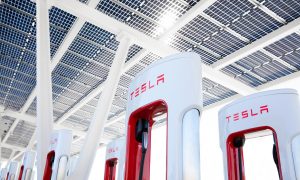If you’ve ever heard the phrase “a solution looking for a problem” then you’ll completely understand what I’m about to say. While I’m at it with catchphrases, Tesla seems to be a living, breathing double-edged sword. When it comes to giving us details, they are “damned if they do, damned if they don’t.”
By now, we all know the Model 3 is going to be huge. We also know that Model S and X vehicles with Supercharging enabled can enjoy “free long distance travel,” which we understand to mean “free for life.” The not so subtle elephant in the room is that free could lead to abuse, which could lead to lines and waiting for Supercharger use. I’ve already discussed what I think is step 1, which is educating folks on some Supercharging best practices they can do to be mindful of our shared asset. I’ve also discussed things Tesla themselves could do to alleviate potential congestion at Supercharger locations.
Here’s my disclaimer: This is a solution looking for a problem! Model 3 is more than a year away and despite what you may hear, MOST superchargers have one or more stalls available MOST of the time. Long waits and lines only plague select locations, and even then, only occur on very few occasions. While I’m no record-holding Supercharger pro I’ve only ever seen an 8-stall location full once. It was Hamilton, NJ and it was before the addition of two Superchargers on the nearby New Jersey Turnpike. I’ve also only ever known of one location to be constantly busy. It was the Newark, DE location, which has recently been upgraded from 4 to 12 stalls. So again, I don’t think this is a problem right now. I don’t even think it will be much a problem when Model 3 hits the streets. Tesla builds new chargers all the time and has committed to both distance and density. They know, more than anyone, which locations are busy and which aren’t. I trust they will plan accordingly.
You will be OK
But since folks love to debate every word – or lack thereof – that Tesla says, let’s have at it. Let’s pretend that the big bad wolf will come to the charger and blow it down just because it’s free and unrestricted once you incur an up-front cost. Let’s further pretend that Tesla considers the idea of a pay per use model of charging. I’ll repeat this later but for the record, I don’t think they’ll do anything like this. Not now, not ever.
- Pay Per Use – kWh. This is a common and seemingly simple idea. You don’t need $2,000 worth of electricity, you only need a few bucks worth a few times a year. You don’t want to pay up front for all the phantom local moochers that you suspect will abuse an unrestricted system. The cars are smart, they can tell how much you’ve used per charging session so it appears they can charge you for it on the basis of that. Maybe you don’t even care if there is a huge markup on the electricity. It’s a win for everyone in that case, because it’s still cheaper than gas. Even if it wasn’t, it’s worth it to take a car as great as a Tesla on a road trip. Plus almost all of your charging is done at home where it’s way cheaper than gas. Fine, points taken. Except, there’s a “but.” But selling electricity is complicated. The United States is complicated! Here, we have 50 states and plenty of lines between them. They get to set their own laws and rules and tax rates. Cities and towns do too. If you thought that gaining approval to build a supercharger was a challenge, imagine trying to become an energy supplier in every municipality as well. This alone is enough to rule out the idea of charging per kWh. Add that in with having to handle point of sale transactions and you’ve completely changed how Tesla must operate. It already takes quite a bit of effort to build out this network, and there is no reason to make it harder. (Let’s pretend that’s why no other automakers have done it.)
Tesla builds new chargers all the time and has committed to both distance and density
- Pay Per Use – Time. There’s a pretty clear precedent for selling time at almost any major municipality on earth: paid parking. In theory, it would result in very few people charging past 90%; that point where your electrons slow drastically and you’d get a lot less bang for your buck. This speaks perfectly to the concept of battling lines with quick turnover. Except, nope. Tesla, in my opinion, won’t be willing or interested in the hassle of point of sale purchases. They’d have to figure out an appropriate price, which I imagine would vary by location. They’d have to employ people to figure out the tax rules and rates for each country, state and city. They’ve have to work with various credit card companies and be able to accept multiple forms of payment. They may even need to carry certain types of liability insurance for providing paid parking. Tesla is in the business of advancing sustainable transport by, primarily, making compelling electric vehicles. Anything else is just noise and takes away brainpower from doing other great things.
- Pay Per Use – Day. Tesla is amazing and has done plenty of things no other company has done before. They continue to surprise us and have stayed alive despite many assumptions that they’d never make it this far. So I’ll humor you, dear reader, and assume they are willing and able to take on the challenges of point of sales purchases. Game on! Rather than selling time or electricity, Tesla can simply sell access to software. Most Teslas on the road, and all that will soon be on the road, will have the hardware required for supercharging. They can undoubtedly figure out how to program an option in your touchscreen (or simpler still, an automated telephone line) that allows you to opt into supercharging access for a day, at a price. They’ve already given away free trials of Autopilot, so we already know opening up software for a limited time is possible. Shoot, maybe they can even get some PR out of it. “Free supercharging on your birthday!” or “Merry Christmas, here’s a free day!” These things sound great, but I still have an objection. Tesla needs money to build more chargers. End of story.
This isn’t about paying for what you use, this is about paying for the building of a network. There will always be owners who use far less electricity from Superchargers than their initial cost would have bought in kilowatt hours. There will also always be some owners who use more. Where I live, property taxes are required whether you send kids to public school or not. We’re all paying for a system.
Which is why – and here’s my promised repeat – I don’t think Tesla will ever adopt a pay per use model for Supercharging. They’ll continue their commitment to density and distance, they’ll continue to monitor busy locations and they’ll continue to keep their eye on the prize. Because remember, the hopefully inevitable adoption of sustainable transport means someone, somewhere, will start building a whole lot more electric car charging stations.
Feature photo of the Tesla Supercharger in Antwerp-Aartselaar, Belgium courtesy of ldubois_BE

